3 Day Advanced Mindfulness Certificate Course by Donald Altman
$599.99 $149.00
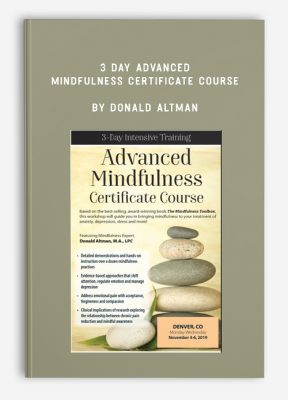
3 Day Advanced Mindfulness Certificate Course by Donald Altman
**More information:
Get 3 Day Advanced Mindfulness Certificate Course at Salaedu.com
Description
- Detailed demonstrations and hands-on instruction in over a dozen mindfulness practices
- Evidence-based approaches that shift attention, regulate emotion, and manage depression
- Address emotional pain with acceptance, forgiveness, and compassion
- Manage moods with interventions that impact clients’ attention
- Clinical implications of research exploring the relationship between chronic pain reduction and mindful awareness
In this comprehensive certificate course, international mindfulness teacher and best-selling author Donald Altman will share powerful clinical tools that will help you create a clear roadmap to wellness. From grounding and attention-focusing skills to metacognitive awareness, Donald will deliver detailed demonstrations and instruction on over a dozen mindfulness practices you can use to improve treatment outcomes.
Best of all, you will learn to embody mindfulness as you help your clients overcome clinical anxiety, depression, chronic pain, PTSD, addictive cravings, and stress related symptoms!
Watch Donald and learn to:
- Alter clients’ habitual and conditioned reactions to anxiety, chronic pain, and depression with practical evidence-based mindfulness techniques
- Apply mindfulness to pain and improve mental and physical functioning in your clients
- Reduce anxiety by mindfully managing transitions through movement
- Creatively adapt your newfound mindfulness tools to work with a variety of client populations
Donald is known for his compelling and entertaining presentations, and this recording will get you excited about using mindfulness with your clients. Return to your practice with a wide range of tools to use in your next session!
- Mindfulness and Cutting Edge Research
- Mindfulness as a metacognitive skill
- Negative effects of a wandering mind
- Breathing reduces rumination and anxiety
- Useful (and free) web resources
- Introduce Mindfulness to Your Clients
- Expand your mindfulness vocabulary
- Help clients understand mindfulness
- Find the right metaphor
- Using clients’ learning styles
- Practice: Getting into the Present Moment
- The Power of Sense Grounding
- Anxiety reduction with sense grounding
- Mindfulness for transitioning between activities
- Physical grounding method of dropping into the body
- Integrate progressive muscle relaxation
- Good for spatial, visual, hands-on learning styles
- Practice: Palm the Present Moment
- Brain Basics, Metacognition, and Interpersonal
- Neurobiology
- Emotional regulation for depression and anxiety
- Balance the brain’s default survival mode
- Effects of cortisol on learning and immune system
- Visual Brain Model for clients
- The brain’s mindfulness module
- Train the brain for calm response and metacognition
- Navy Seals, arousal control & parasympathetic nervous system
- Heart rate variability & relaxation response
- Practice: The Power of Breath
- Practice: Ask Clients the 3-Minute Question
- The Behavioral Side of Mindfulness
- Core lifestyle skills awareness training
- Sleep hygiene
- Manage sleep
- Sleep rituals and strategies
- Healthy eating/nutrition
- Caffeine, protein, neurotransmitters, and the brain
- Exercise
- Manage technology – How weapons of mass distraction may be rewiring the brain
- Practice: Assessment of Technology and Time
- Focus the mind (useful for ADHD)
- Integrate breath with a word/image
- Practice: Be the Pebble
- Mindful Laughter for Depression and Grief
- Tools for the ”terminally serious”
- Research on laughter and mood
- Biochemistry of laughter & human laughter response
- Laughter yoga and laughter in therapy
- Practice: The Lightness of Laughter
- The Uplifting Power of Storytelling
- Storytelling to overcome depression and build relationships
- Fredrickson’s Broaden and Build Theory of Positive
- Emotions
- Broaden attention; find resilience
- Stories are fundamental to attachment
- Build relationships through a story of strengths
- Practice: Identifying Strengths & Strengths Journal
- Manage Moods through Attention and Selective Memory
- Master attention and memories
- Savoring of the present moment
- Practice: Here and Now Pleasantness
- Use selective memory to savor the past and future
- Practice: Savoring Success: Past, Present, and Future
- Harnessing Gratitude to Increase Positive Emotions
- Manage depression with gratitude
- Gratitude research
- Four psychological reasons for gratitude
- Techniques that make gratitude interpersonal and enhance supportive social networks
- Practice: The G.L.A.D. Technique
- Heal Emotional Pain through Acceptance, Forgiveness, and Compassion
- Forgiveness for moving forward from trauma
- Forgiveness is a skill
- Research on compassion practice
- Changes in brain function
- Security priming for feelings of safety and trust
- Develop positive emotions and resources
- Practice: Loving-Kindness Affirmation
- The Truth About Stress
- Biological markers of stress: Telomeres and aging
- Identify and assess client stress levels
- Perceived Stress Scale
- Epstein Stress-Management Inventory
- Practice: Be a Smart Stress-Avoider
- Mindfulness for Addictive Cravings
- Emotional regulation for cravings
- Impulse control and craving control using grounding
- Practice: S-T-O-P Grounding Technique
- Change the Perception of Pain Mindfulness for Chronic Pain
- Introduction to the Body Scan Practice
- Demonstrate how to pay attention non-judgmentally
- Powerful grounding method; applications
- Practice: Surf the Body (The Body Scan)
- The Power of Sense Grounding Trauma
- Constructively distance from PTSD and negativity
- Three kinds of sense grounding
- Practice: Focusing on Favorites
- Reduce Anxiety by Mindfully Managing Transitions
- Manage transitions through movement and nature
- Process orientation vs. outcome orientation
- Attention Restoration Theory
- Effects of nature on focus, moods, & healing
- Slow down with nature to get present
- Integrated Tools
- Practice: Ground-Surfing (Mindful Walking)
- Practice: Turning Down the Volume with Nature
- Re-Envision and Refocus
- Working with difficult, unresolved life situations
- Metacognition as a path to insight
- Practice: Bear Meditation
- Put It All Together
- Create a mindfulness roadmap for clients
- Bundling practices together
- Engage through learning styles
- Maintain skills
- Follow-up and reinforcement
- Research limitations and the potential risks of mindfulness in treatment
More information about Medical:
Medicine is the science and practice of establishing the diagnosis, prognosis, treatment, and prevention of disease.
Medicine encompasses a variety of health care practices evolved to maintain and restore health by the prevention and treatment of illness.
Contemporary medicine applies biomedical sciences, biomedical research, genetics, and medical technology to diagnose, treat, and prevent injury and disease,
typically through pharmaceuticals or surgery, but also through therapies as diverse as psychotherapy, external splints and traction, medical devices, biologics, and ionizing radiation, amongst others.
Medicine has been around for thousands of years, during most of which it was an art (an area of skill and knowledge) frequently having connections to the religious and
philosophical beliefs of local culture. For example, a medicine man would apply herbs and say prayers for healing, or an ancient philosopher and physician would apply bloodletting according to the theories of humorism.
In recent centuries, since the advent of modern science, most medicine has become a combination of art and science (both basic and applied, under the umbrella of medical science).
While stitching technique for sutures is an art learned through practice, the knowledge of what happens at the cellular and molecular level in the tissues being stitched arises through science.
1 review for 3 Day Advanced Mindfulness Certificate Course by Donald Altman
Add a review Cancel reply
Related products
HEALTH - FITNESS - LIFESTYLE - MEDICAL
HEALTH - FITNESS - LIFESTYLE - MEDICAL
HEALTH - FITNESS - LIFESTYLE - MEDICAL
HEALTH - FITNESS - LIFESTYLE - MEDICAL
HEALTH - FITNESS - LIFESTYLE - MEDICAL
HEALTH - FITNESS - LIFESTYLE - MEDICAL
Complete Certified Professional Coach Online Course from Berry Fowler

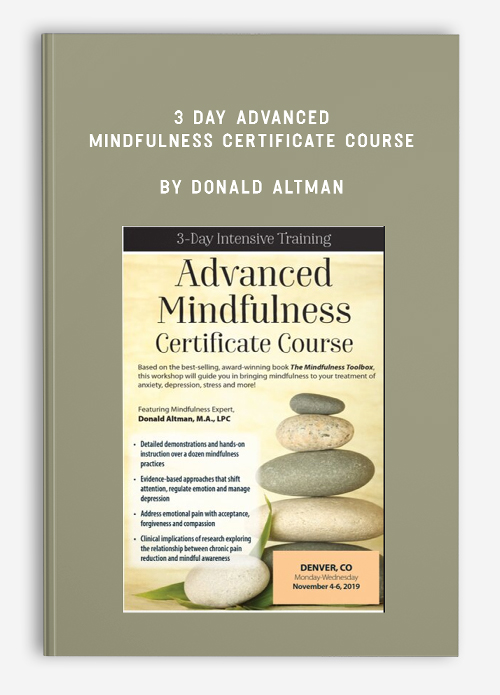
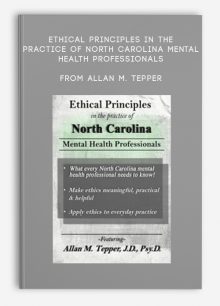
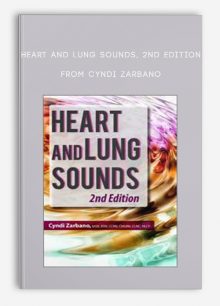


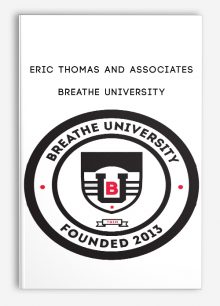

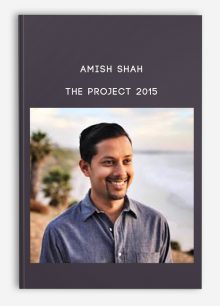

Trevis Trevis –
We create this shop with the mission: Bring the courses to 500 millions of people in the world, to help them awake their power and change their